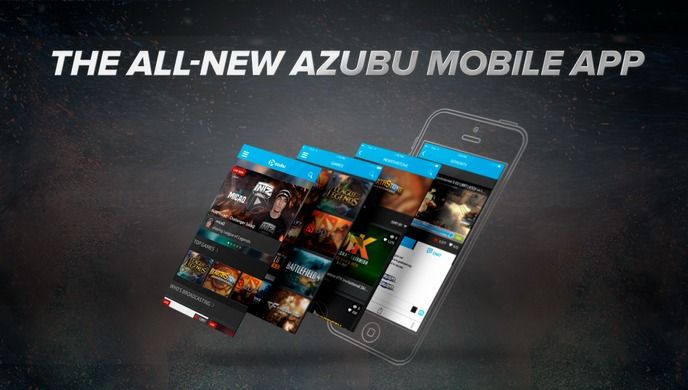The massive growth of eSports and streaming video continues, as fans can’t seem to get enough of watching their favorite players gaming. While Twitch has garnered headlines (and a buyout by Amazon) with its rapid rise to 100 million views per month, that’s not the only streaming service around. Competing with the Twitch juggernaut requires a different approach, and that’s where Azubu is looking to make its mark by bringing a professional approach to streaming eSports.
“Azubu is a global broadcast network, delivering premium live and on demand eSports action, programming, news and analysis,” according to the web site, focusing on providing in-depth analysis and a solid technical foundation to provide the best streams possible. Azubu’s CEO Ian Sharpe sat down with [a]listdaily to discuss what’s happening at Azubu and in the world of eSports and streaming video.
 Ian Sharpe
Ian Sharpe
What’s new at Azubu and what’s coming up?
In the last year Azubu 2.0 has launched, we’ve signed teams like KeSPA, and have continued to sign teams. Azubu 2.0 really represented us standing something up and proving to the community that there was a way to have an alternative to Twitch — a global platform. The underlying technology meant that we could be global, we could work all around the world. That’s what was good about 2.0, but it didn’t really look the part and we’ve had a lot of people in the community say that. So we’ve spent a lot of time thinking about the design and the approach. We’ve sat down and listened to the community, and we’re on the eve of launching something to the market that we started showing at GDC. We’ve shown it to some teams, we’ve shown it to Riot, to some other publishers, and we’ve started to get a massive response. The buzz is out there. We’re creating something that is much more dedicated to a good user experience, to a great design, to being broadcasters first, to enabling discovery for new teams and to learn from some of the great sites out there.
How is the audience of eSports changing Is it just growth, or is the demographic changing, or the desires within the demographic?
It’s an interesting thing. I think it’s like a river in that there are swells and there are eddies and there are countercurrents. Just look at CounterStrike:Global Offensive, it’s something that’s just had a resurgence; it’s like a swirl or an eddy. Then there’s what seems to be the oversaturation of the MOBA — Infinite Crisis, a MOBA too far. You’ve got Super Evil Evil Megacorps’s Vainglory and others coming out, testing the space and testing how people are interacting with it. Ultimately the river is growing and it’s moving towards the sea, and that’s a great thing. But on the way there are little forks, little rivulets like Vainglory that are seeing whether one day they may transform into a stream and become another river. There are things like League of Legends that just go from strength to strength, year after year. Ultimately what I see is experiment and evolution, and people trying stuff.
What kind of viewership are you seeing on mobile, and how is that changing?
We sat down at Christmastime and realized we had developed an app, and we’d thrown something up there, and it worked — but we weren’t making mobile a first-class citizen. So in January we came to that and created a dedicated mobile team. What we’re seeing is significant mobile usage, especially in South Korea. An eSports veteran that works with us said to me, “You’ve got to understand. Kids in Korea, there’s one TV and it’s a small apartment and they live at home. Mom and Dad are watching Korean soap operas, kids are going and watching the abundant eSports content in their rooms. That’s why you’re seeing a lot of pickup.” We are seeing significant mobile usage, to the point where, in certain territories, one in five of our streams is just watched on mobile.

How is Azubu working with the audience, and trying to create a better experience?
We’ve invested in a business intelligence team, there’s a whole bunch of people doing a forensic deep dive and looking at the stats, understanding the anatomy of the audience. One of the other things that goes along with this is customer service. We want to make sure that, if you’re watching content on Azubu, you don’t howl into the void. We going to put a customer service team in place that will support and help and nurture. That will then feed into our metrics, that will feed into whether people feel it’s a warm and friendly experience or something you will fight your way through. I think we’re past the phase of early adopter technology and we’re now into the phase that we help consumers get onboard, and that’s what we’re trying to do as well.
You’ve got changes to the Azubu product underway, but what about your marketing? How are you getting the message out about Azubu and how it’s changing?
I’ll give you a philosophy and I’ll give you a practicality. Philosophically, you made a distinction between product and marketing, but they have to be linked. You can say whatever you want in a marketing campaign, but unless you’ve got the product to back it up… you can lead a horse to water, but you can’t make it drink. It has got to start with the product. It has to be a position of strength you can then have a marketing campaign around, otherwise people are just going to say it’s terrible. A good product gives us the basis for a good marketing campaign. Then there’s a whole bunch of stuff our good friends at Ayzenberg are going to put into place. We’re going to transform the Azubu brand, the name, the legacy.
We’re not rushing out a product just to prove to our investors and the community that Azubu is a thing, we’re creating the right thing we know the community wants. We’re taking our time about doing it. It’s really been almost a year since we’ve done any significant press. I say this internally a lot: You don’t turn on the taps when you have a leaky bathtub. You fix the bathtub, then turn on the taps, and that’s what we’re about to do.

